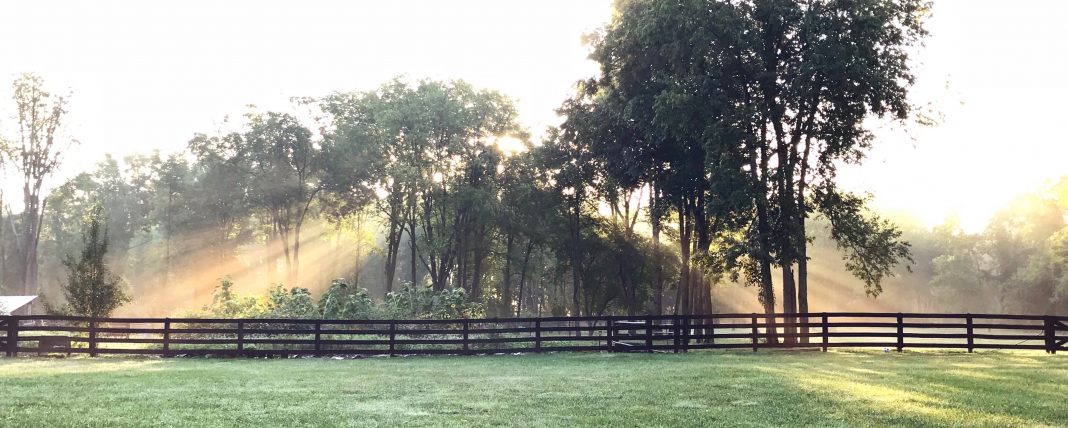I am an unlikely localist. My life is a product of globalization. My mother’s side of the family is from Singapore, China, and India, linked to each other through the former British Empire and to me by way of the Vietnam War when my mom met my dad at the U.S. Navy base in Singapore. I have adopted children from Guatemala and Uganda, lived in Africa for four years, and was so deeply shaped by these cross-cultural encounters that I turned them into a career. I research colonial and post-colonial histories and say things in my classes and in my administrative role that would likely make the Bar Jester very angry. My farm and home have been inspired and informed by communities in the “cloud.” I like to scroll through images of the woodcarvers, farmers, and farming families that fill my Instagram feed to glean ideas for my place. I learned how to skin a deer and kill a pig by watching how-to videos on YouTube. When I tell my life story, it is usually as a series of dislocations and uprootings; I am a long way from the first place I called home (Florida) and do not plan to return there. I share these confessions to frame the slow and surprising ways I am developing my localist, agrarian sensibilities and am learning how to root in the place I now call home after a lifetime of wandering.
I began my farming venture seven years ago like I had any other life adventure up to that point: more full of visions and ambition than money or time. Among the many early inspirations for our place, a poem called “The Farm” from Wendell Berry’s A Timbered Choir collection shaped my imagination and expectations for the good life. The first half of this long poem begins with a rich description of a place he happens upon during a Sabbath walk, a place well ordered by human hands, but animated by an ongoing dance between sunlight and soil, plants and animals, people and place. As my sons and I began cutting a farm into the forest that surrounded our new home, like modern-day pioneers, Berry’s descriptions of a life well lived on the land framed my vision of what was possible.
Nothing about small-scale farming fits into our large-scale world, fashioned as it is by consumer values of convenience, comfort, and control.
Like many “back-to-the-land” families, we were able to ride the wave of good feelings and intentions for a couple of years until frozen water, escaped pigs, and massacred chickens reminded us why Americans have been fleeing farm life for over a century: it’s hard. For every task I want to do on my farm there are at least three more I have to do just to keep things running, all of which create additional demands on our already strained lives. Of course, we enjoy the fruits of our labor: bucolic scenes out our windows, space to play and explore, and a steady supply of eggs and pork that grace our table. But these benefits don’t always outweigh the costs, depending on the season, and depending on who you talk to in my family. The farm can’t compete with the screens, activities, and social events that grab my kids’ attention and vie for their affection. Nothing about small-scale farming fits into our large-scale world, fashioned as it is by consumer values of convenience, comfort, and control (not to mention economics, which I will save for another essay). We’ve had to learn to root ourselves in something deeper than self-interest and a sense of adventure.
This summer, I shared “The Farm” with my niece, an insightful young lady with her feet on the ground, and she noticed a section that I had overlooked that has changed the way I read the whole. Midway through the poem, Berry pivots from his description to what I have come to think of as an invitation to participate in the life of a place on its own terms. He writes,
To farm, live like a tree
That does not grow beyond
The power of its place.
It rises by the strength
Of local soil and light,
Aspiring to no height
That it has not attained.
More time, more light, more rain
Will make it grow again
Till it has realized
All that it can become,
And then it dies into
More life, deserving more
By not desiring more.
I’ve revisited these lines several times during the past few months, and each time I find myself confounded by the analogy, but drawn by its difficult wisdom into a way of being rooted deeper than my own desires. It is one thing to regard trees as symbols of human flourishing, but another to look to trees as models for human action. How does a seemingly inanimate plant provide a pattern for a desiring creature to dwell in the world? In this invitation to participate in “more life”—to live like a tree—Berry suggests that the power to achieve “more” is not located in the desiring creature but in the place the creature inhabits and the community of which it is a part.
Farming like a tree requires me to embrace limits imposed by my place and time to discern among many possibilities out there, what is possible here. Practically speaking, this has meant that our conversations about what we will do next year start with givens, rather than wants. For the past seven years, I have added “more” to my farmstead in pursuit of a vision of the good life always beyond my immediate horizon, often comprised of images of flourishing farms somewhere else. More fruit trees, more garden, more bees, more livestock, more tools do not by themselves ensure more life: more walks, more community, more family. As this growing season closes I am considering how I might scale back and slow down to better see where we are as a place to root rather than spread. Localism has become for me less of an ideal or image of how life ought to be and more of a way of inhabiting the world.













Perfect.
“…They will be called oaks of righteousness,
a planting of the Lord
for the display of his splendor.”
-Isaiah 61:3
Comments are closed.